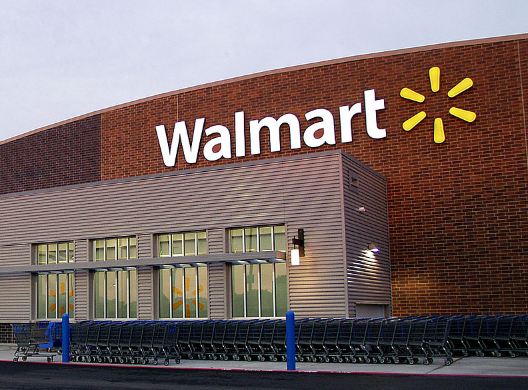Walmart may be the world’s largest retailer, but not a lot of people know the history behind it. So here’s a little bit of Walmart’s background.
Its founder, Sam Walton, was born in Kingfisher, Oklahoma, on March 29, 1918. Because of the circumstances at the time – particularly the Great Depression – Walton showed industriousness at an early age. Like many other youngsters at the time, he did a lot of chores to support his family. He milked the family cow, bottled the surplus, and delivered them to customers. He also delivered newspapers and sold magazine subscriptions.
When Walton entered college, he worked at various odd jobs, including waiting in tables in exchange for free meals.
It was at this point where he realized he wanted to go into the retailing business. Three days after graduating from the University of Missouri, Walton started work at J. C. Penney in Des Moines, Iowa, as a management trainee. He was paid $75 a month for his position. However, Walton resigned in 1942 in anticipation of being inducted into military service in the Second World War. A year later, he married Helen Robson, with whom he had four children. Eventually, he joined the military.
After the war, Walton and his family moved from Iowa to Newport, Arkansas. Having gained previous retailing experience, he opened his first variety store, Ben Franklin. It became a success due to Walton’s pioneering concepts. For one, he kept sales prices lower than than those of his competitors by reducing his profit margin. As a result, sales volume significantly grew higher.
However, Walton’s landlord refused to renew the lease because the latter wanted to reclaim the store after seeing its success. This caused Walton to look for another location. He left Newport to Bentonville, where he opened Walton’s 5 & 10 (Walton’s Five and Dime) on May 9, 1950.
Walton opened the first proper Walmart store in Rogers, Arkansas on July 2, 1962. It was his assistant Bob Bogle who came up with the name “Walmart.” It was originally called the Wal-Mart Discount City store. This time around, Walton was resolute to market more American-made products. He sought American manufacturers who would supply the merchandise for the entire Walmart chain at a price that was attractive enough to match foreign competition.
By 1967, Walmart had expanded to 24 stores across Arkansas and hit $12.6 million in sales. A year later, Walmart opened its first stores outside Arkansas, first in Missouri and then in Oklahoma.
In 1969, the company was incorporated. A year later, it changed its name to Wal-Mart Stores, Inc.
Walmart went public in October 1970 on the New York Stock Exchange, with the first stock being sold at $16.50 per share. Two years later, the company had its first stock split at a market price of $47. By this time, the chain was operating in five states and continued with its expansion. In 1981, Walmart penetrated into the southeastern U.S. market for the first time, opening stores in Georgia, South Carolina, Florida, and Nebraska. In 1983, Walton opened his first Sam’s Club store, a membership-based warehouse club.
To further improve the service, Walmart installed a private satellite communication system in 1987 – which was the largest in the U.S. at the time. This helped the company to link its operations through voice, data, and video communication.
At the time of Sam Walton’s death in April 1992, there were 1,960 Walmart stores employing 380,000 people. His firstborn child Rob Walton succeeded his father as chairman, while Rob’s brother John was appointed as the company director (he would hold this position until his death in 2005 from a plane crash).
In 1993, Walmart celebrated its $1 billion sales week, and its first $100 billion sales year in 1997. In 2009, Walmart exceeded $400 billion in annual sales.
Walmart is a strictly family-controlled business. The family holding company, Walton Enterprises, owns a 50% stake in the Walmart store chain. For sure, the Waltons are one of the wealthiest families in America.
As of 2020, Walmart has 11,484 stores and clubs across 27 countries (operating under 56 various names) and annual revenue of $524 billion.

